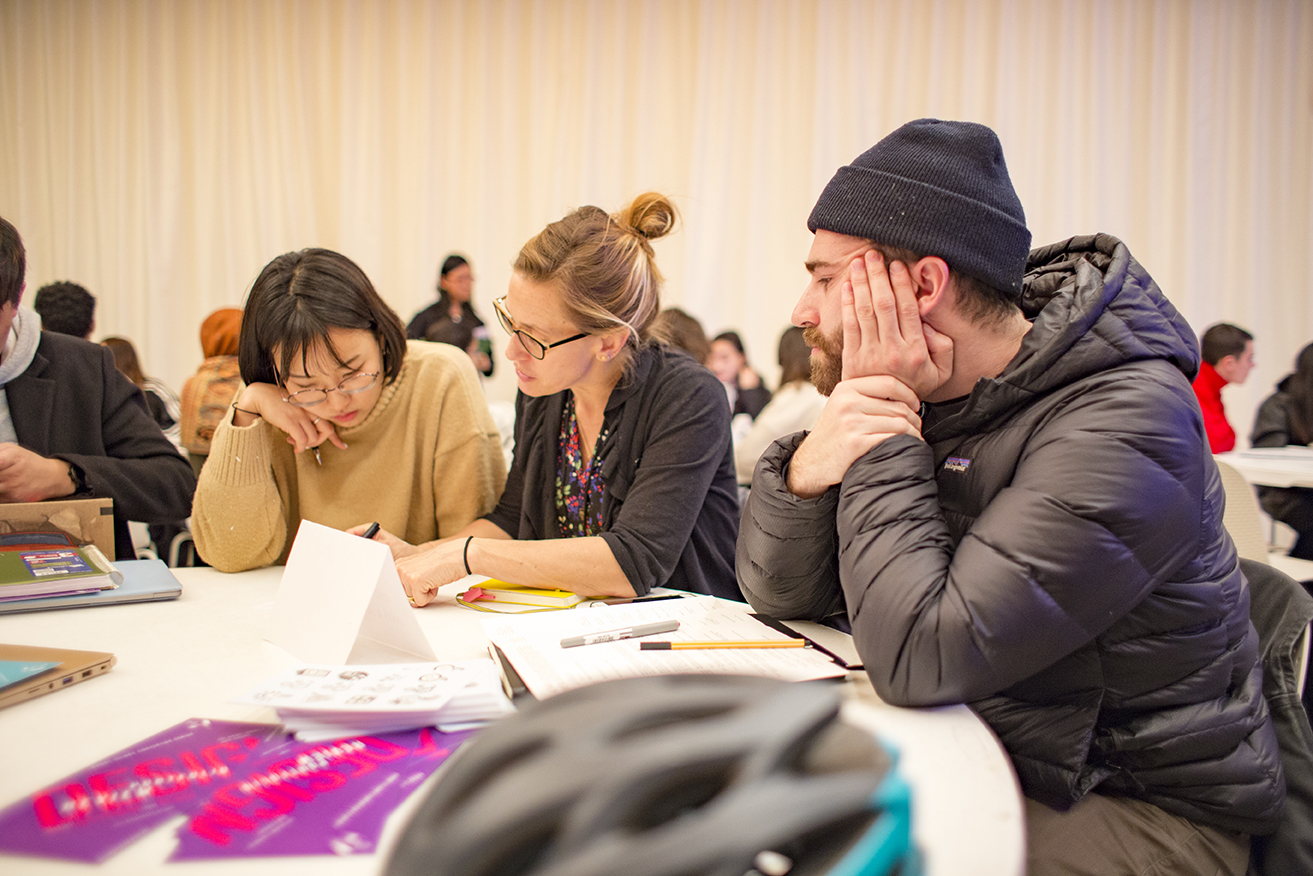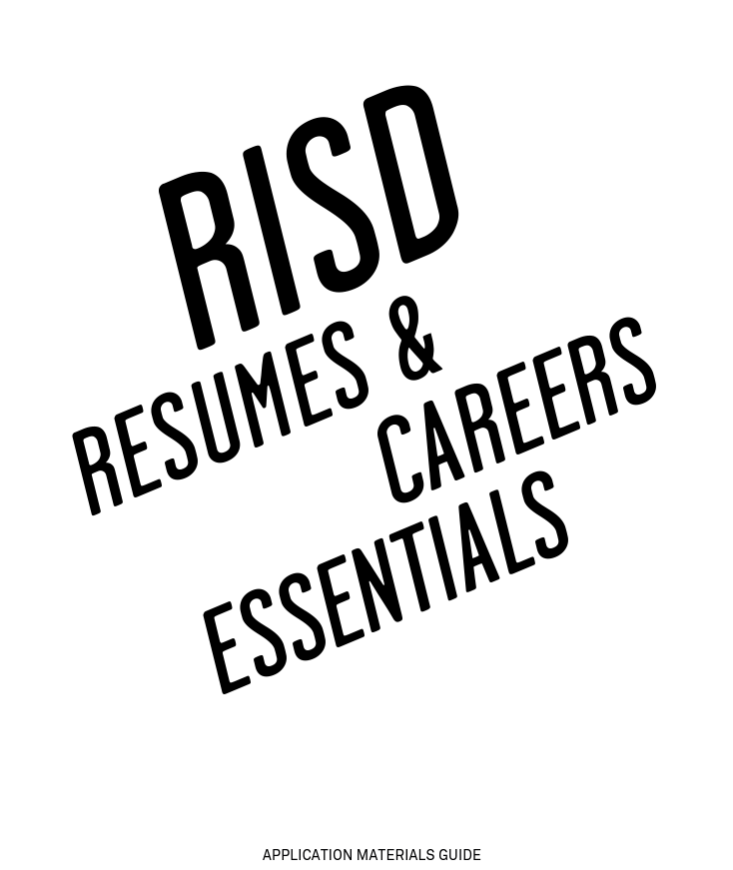Importance of the Resume/CV
When people think of career preparation, the resume is usually their first thought. Next to your portfolio or demo reel, the resume is the most important document when applying for a job, internship, grant or artist opportunity. The following page is an overview of authoring considerations for effective resumes of varying types and usages.
RISD Resume Examples
The Career Center staff has created examples of resumes you can view and use as models for building your own resume and CV. This can be very helpful when considering options relating to layout, style, content, and tone.
What is a Resume?
A resume is typically a one-page document that provides an overview of your relevant education, skills, and experiences as they relate to a job, internship, or similar professional opportunity. The focus should be on highlighting experiences and attributes that make you a good candidate for the position you are applying for.
What is a CV?
The term ‘CV’ can sometimes be confused or misused, and the use even varies depending on where you are in the world. A Curriculum Vitae (CV) is used predominantly for teaching positions, and occasionally requested for grant and residency applications. In the United States the CV is considered a record of your professional academic career. Outside of the US, a resume is referred to as a CV without any noticeable difference.
What is an Exhibition Resume?
This resume serves specifically as a record of your accomplishments as an artist with an emphasis on exhibitions. It’s often provided to galleries and museums but may also be used to apply for grants, fellowships, scholarships, competitions and residencies. If you aspire to be a practicing fine artist, you will likely need this type of resume.
Anatomy of a Resume
- Geared towards a RISD student’s first, professional resume.
- Name and contact info including portfolio URL. Use large type for your name.
- Objective summary. One to two sentences introducing who you are and what your goals are for the coming year.
- Education. Stating major and year of graduation.
- Experience / Relevant Coursework. List professional experience and/or relevant classes in reverse chronological order (most recent to least recent).
- Skills. List relevant skills organized by type. IE: software, art, and professional.
- Volunteering, awards, exhibitions, clubs.
Anatomy of a CV
- Geared towards a RISD student’s first academic CV to be used for teaching applications. For job-related CVs outside of the U.S., see Resume outline above.
- Name and contact info including portfolio URL. Use large type for your name.
- Teaching summary. (Optional) A few sentences introducing who you are and your teaching/academic experience.
- Education. Stating major and year of graduation.
- Teaching Experience. List teaching experience including any TA or instructor positions in reverse chronological order.
- Exhibitions. List any showings of your work with title of show, venue, location, dates, etc.
- Skills. List relevant skills organized by type. IE: software, art, and administrative
- Awards, Grants, and Residencies. List any artistic awards or residencies with the title and date.
Anatomy of an Exhibition Resume
- Geared towards a RISD student’s first fine art exhibition resume.
- Name and contact info including portfolio URL. Use large type for your name.
- Artist summary (Optional). A few sentences introducing who you are and the focus of your artistic practice.
- Education. Stating major and year of graduation.
- Exhibitions. List any showings (solo or group) of your work with title of show, venue, location, dates, etc.
- Awards, Grants, and Residencies. List any artistic awards or residencies with the title and date.
- Press. List any publications written about you or your work (either print or digital).
- Experience / Relevant Coursework. (Optional) List professional experience and/or relevant classes in reverse chronological order.
- Volunteering, awards, clubs

Resume / CV Tips
- Just starting out: If you haven’t had professional fine art or design experience yet, share your school experience. On campus shows, work study jobs, and your best classes are relevant experience and can be listed as such.
- Filter out less important info: Information should be limited to a “need to know” basis. Example: Include descriptions of your past work that are relevant to the opportunity you are pursuing with this resume.
- Prioritize the order of info: Information should be prioritized from the top (highest priority) to the bottom of the page (progressively lesser priority). Example: Your name and contact info are the top priority and come first in your resume.
- Relevant skills: For artists and designers with a wide range of skills, focus in on the most relevant ones and leave the others out. Too many skills could translate as unfocused for an employer with specific needs.
- Design layout considerations: Visual artists and designers should keep their documents simple. Typeface / font selections should be easily legible and use of color should be limited while maintaining strong contrast on a white page. Design layouts should be minimal with generous margins. Your creativity is better demonstrated in your portfolio / demo reel.
- Page count: Job and internship-related resumes should generally be one to two pages. Balance being concise, with highlighting relevant skills and experience in a hierarchical manner. Teaching CVs typically do not have a page limit.
Applicant Tracking Systems
Some companies require a file upload for your resume to an online portal. In this case, your resume will be screened by a software known as an applicant tracking system that looks for keywords from the job listing. If you’re applying for a job through an online form, assume that your resume is entering an applicant tracking system. In these instances, consider optimizing your resume in the following ways:
- Keep your design layout simple. Single-column resumes may typically be best suited for Applicant Tracking Systems.
- Use exact terminology for skills and requirements as listed in the job, as much as possible.
- Use both the long-form and acronym version of keywords for improved searchability: “Master of Fine Arts (MFA)"
- Use a chronological resume format. Avoid the functional resume format.
- Don’t use icons, pictures, infographics or other graphic elements as they often cause major parsing errors.
- Use a traditional resume font like Helvetica, Garamond, or Georgia.
- Use standard resume section titles like “Work Experience” rather than non-traditional options like “Where I’ve Been”.


